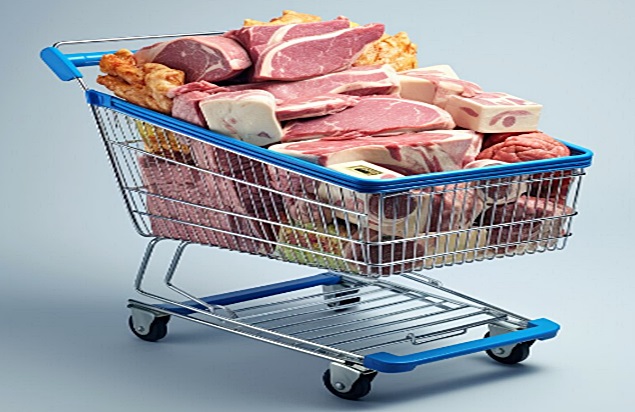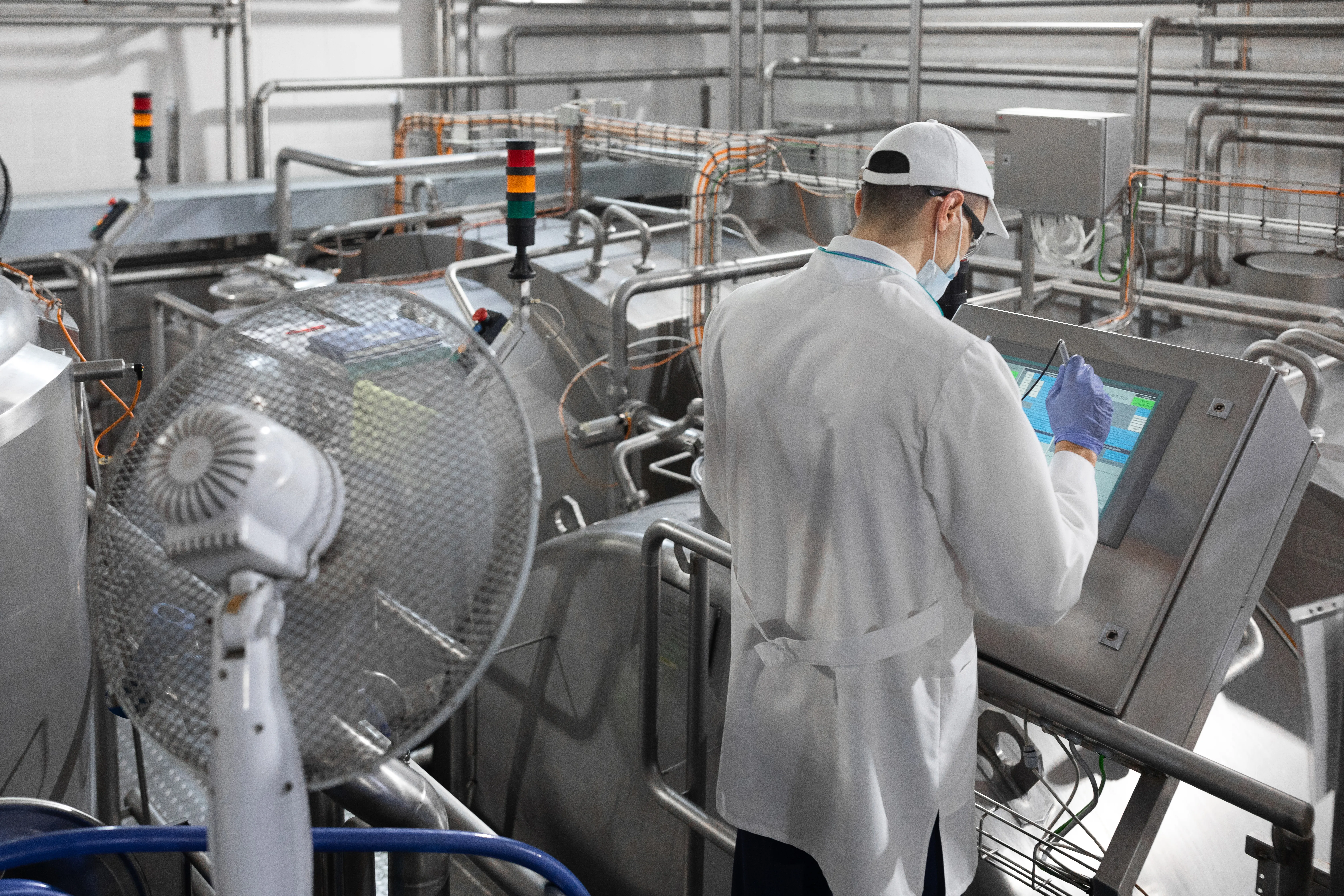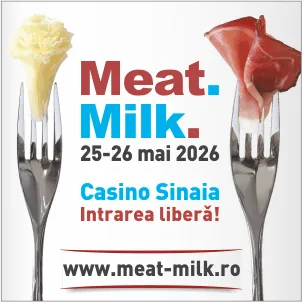
Macroeconomic Outlook
According to the European Central Bank (ECB), economic growth prospects in the euro area are weakening, primarily due to low consumer confidence, a higher household tendency to save, and reduced business investment.
These factors are expected to have a significant impact on the European Union’s agri-food sector, according to the latest report on agriculture and the food industry issued by the European Commission.
Macroeconomic Landscape
The ECB’s recent decision to lower its key interest rates should begin to ease the tightening effects of previous monetary policy. According to the ECB’s latest forecasts, real GDP in the euro area is expected to grow by 0.8% in 2024 and 1.3% in 2025, reflecting a slightly slower-than-expected recovery in domestic demand. The euro is projected to appreciate slightly against the US dollar—from USD 1.09 in 2024 to USD 1.10 in 2025.
Inflation is expected to continue adjusting toward the 2% target following its sharp rise in 2022. However, inflation in 2024 is still projected to exceed the target by 0.5 percentage points due to persistent labor cost pressures. Food inflation, which surged particularly in 2023, is expected to reach 2.9% in 2024 and 2.4% in 2025 as the effects of past energy and agricultural commodity price shocks fade.
Oil prices are projected to remain relatively stable, with Brent crude expected to hover around USD 80 per barrel or slightly below that level in 2025, despite OPEC+ plans to further curb output amid sluggish global demand.
For natural gas, price forecasts have been revised upwards. Prices surged last summer due to maintenance work at Norwegian gas fields and the temporary closure of the US Freeport LNG facility. Prices could rise to around USD 14/MMBtu (roughly EUR 42/MWh) in Q1 2025, as Ukrainian transit gas flows have ceased.
Milk Prices Remain Above Five-Year Average
In 2024, raw milk prices in the EU have stabilized at levels well above the five-year average. Although weather conditions were unfavorable in certain regions at various times of the year, the availability and quality of pasture and feed have been sufficient to support stable milk supply.
Thanks to a slight increase in milk solids content (+0.1%), EU milk supply rose modestly in 2024 (+0.5%, partly due to the leap year). An increase in milk production (+0.9%) offset a slight decline in the dairy herd (-0.3%).
Cheese and whey production are capturing a growing share of milk solids (+2.1% and +1%, respectively), while EU butter output has declined (-1.6%), reaching record-high prices in 2024.
However, total EU dairy exports decreased in volume in 2024 (-2% in milk equivalent), with variations across product categories. While cheese exports continued to grow (+2.1%), exports of skimmed and whole milk powders fell (-5% and -15%, respectively), due to weak import demand from China and rising competition in key markets.
Unexpectedly, fresh dairy product output is projected to rise in 2025 (+0.5%). However, sluggish global demand has triggered a decline in exports of fresh dairy products (-3%).
Milk supply in the EU is expected to grow marginally in 2025 (+0.2%). Assuming normal weather conditions, the continuing decline in dairy cow numbers (-0.7%) should be offset by rising milk yields (+1%).
In 2024, milk deliveries in the EU remained stable (+0.5% year-on-year, unadjusted for leap year), despite unfavorable weather in some regions. There was significant variation among countries.
Milk supply is likely to remain stable in Germany and Denmark, while declines are expected in the Netherlands and Ireland (the latter affected by wet weather that hampered pasture accessibility). Deliveries increased in France, Spain, and Italy in 2024, while Poland maintained its strong growth trend of recent years.
The EU dairy herd is expected to continue its long-term decline (-0.3%). Dairy production is projected to rise slightly in 2024 (+0.9%), albeit at a slower pace than in 2023. Solids content is unlikely to rise significantly (+0.1%), limiting additional availability of milk solids for processing.
Assuming stable weather and continued high raw milk prices, the upward trend in milk yields (+1%) should again offset declining herd numbers (-0.7%) in 2025, resulting in a marginal increase in milk deliveries (+0.2%) and stable milk solids availability.
Dairy Production
EU cheese production continued to rise strongly in 2024 (+2.1%), increasing its share of milk solids usage. With competitive prices, EU cheese exports are expected to continue their upward trend (+2% in volume).
EU cheese imports (mostly high-value premium varieties) are showing signs of recovery, supported by easing global inflationary pressures in 2024, with notable import growth from the UK and Switzerland (+8% and +10%, respectively, year-on-year).
Assuming stable milk fat supply, EU cheese production could continue to grow in 2025 (+0.5%). Cheese exports may also rise (+1%), though at a slower pace, given the sluggish recovery in consumer demand in key import markets.
Whey production in the EU is likely to follow its recent growth trend (+1%). EU whey exports are expected to increase (+3%), while domestic use remains stable (+0.1%).
In 2025, stable EU milk supply and favorable cheese production outlooks may support further whey output growth (+0.7%), driven by rising exports (+2%), with stable domestic consumption.
EU skimmed milk powder (SMP) production fell slightly in 2024 (-0.1%) after a significant drop the previous year. The export expansion seen in 2023 could not be sustained. Although SMP exports continued rising in H1 2024 to most MENA countries, weak import demand from China is expected to drive a 5% decline overall.
These supply and export dynamics should allow for modest growth in domestic use (+0.6%), including processing into fat-filled powders. In 2025, SMP production could edge up slightly, with exports potentially rebounding depending on import demand from Southeast Asia and the EU's competitiveness (+1%).
EU Dairy Exports on a Downward Trend
After a recovery in 2023, EU whole milk powder (WMP) exports dropped sharply in 2024 (-15%) due to persistently weak Chinese demand and increased competition from New Zealand in other export markets.
These challenges are likely to persist into 2025, leading to a further decline in WMP exports (-5%). WMP production, however, is expected to decrease only slightly in 2024 (-0.2%), supporting a strong recovery in domestic use (+11%).
EU butter prices surged in 2024, exceeding EUR 7/kg before autumn. The price increase was driven by tight supply and steady demand. However, butter production is expected to decline in 2025 (-1.6%).
High EU butter prices have hindered export growth, with volumes falling (-4%) in 2024 from elevated levels the previous year. Domestic use may adjust to reduced price competitiveness (compared to other fats), declining by 1.4%.
Driven by gains in fresh dairy product output in the first three quarters, overall production is likely to increase (+0.5%) in 2025. Cream and yogurt may see dynamic growth (+2%), while drinking milk supply is expected to rise slightly (+0.3%).
However, EU exports are likely to continue declining (-3%) due to reduced import demand from China. Lower exports may redirect volumes to the EU domestic market, prompting an increase in internal use (+0.6%).
In 2025, EU consumption is expected to resume its downward trend (particularly for drinking milk), and exports could erode further due to ongoing weak global demand (-3%). With negative demand drivers on both domestic and international fronts, EU dairy output could fall to 2022 levels (-0.8%).
Meat Sector – General Overview
Ongoing structural adjustments are leading to declining EU beef production, projected to fall by 0.5% in 2024 and 1% in 2025. Despite tight supply, EU beef exports are performing well, particularly in the Turkish market. EU per capita beef consumption fell by 1.7% in 2024 and is expected to drop another 1.2% in 2025.
EU pigmeat production is recovering in some countries, showing a mixed trend overall. Still, total EU pork production is expected to decline slightly (-0.2%) in 2025. Lower demand from China could hamper exports, which are forecast to fall by another 2% year-on-year.
The EU poultry sector performed well in 2024, with a 4% rise in production and a 3% increase in exports. Production is forecast to grow by 0.9% in 2025, with exports up 2%. Per capita consumption is also expected to rise. However, uncertainty surrounding the spread of Highly Pathogenic Avian Influenza (HPAI) in Europe and the Americas remains a significant concern for the sector.
Meanwhile, the historically declining EU sheep flock has led to a 4.9% increase in slaughtering in 2024. A further drop of 1% is expected in 2025. Strong demand and high domestic prices have kept imports elevated (+2% in 2024), while meat exports have fallen further (-10%) due to lack of competitiveness.
Overall, per capita meat consumption in the EU rose slightly in 2024 to 66.8 kg (+0.8% year-on-year) and is expected to stabilize in 2025.
Beef Production
EU beef production increased by 3% year-on-year in the first half of 2024, mainly due to a significant rise in slaughtering in Italy (+9%) and Poland (+20%). This growth may have been driven by various factors, such as poor pasture conditions in Central Europe and growing demand in certain export markets (e.g. Turkey).
However, by the end of 2024, beef production declined slightly (-0.5%) due to a shortage of young cattle in some EU countries (e.g. Italy and Spain). The limited supply of beef continues to support EU beef producer prices and live cattle prices.
Moderating feed prices and high carcass prices are expected to support better margins for fatteners. In 2025, EU beef production is expected to continue its downward trend, decreasing by 1.0% year-on-year due to shrinking herds.
As consumer prices remain high due to limited supply, EU per capita beef consumption in 2024 is expected to decline slightly, and a further drop to 9.6 kg (-1.7% year-on-year) is projected in 2025.
Despite limited supply, EU beef exports grew in the first half of 2024 (+41,600 t or +17% year-on-year). The Turkish market was the main driver (+28,100 t), alongside rising exports to Algeria, Switzerland, and the Philippines.
EU exports are expected to grow by 10% year-on-year. During the same period, EU live animal exports declined by 16% year-on-year, due to a relative shortage of live animals and difficulties in accessing some markets for geopolitical reasons. Overall, live animal exports are expected to fall by 2% in 2025 year-on-year.
In 2024, the EU market remained less attractive for imports, with a 2.2% decline from January to June year-on-year. Imports from Brazil dropped significantly (-15%), while imports from the UK fell by 0.2%.
Major EU trade partners, including South American countries, are finding more profitable markets elsewhere (e.g. the U.S.) due to a relatively tight global beef market. In 2025, beef imports could decline by another 1.5% due to expected lower production in Brazil next year.
Pork Production
In the first half of 2024, EU pork production increased by 1.7% year-on-year. The largest increases were recorded in Poland (+77,000 t or +9%), Hungary (+18,000 t or +8.3%), and Germany (+18,000 t or +0.9%), although production declined in Spain by 5,000 t (-0.2%).
Over the same period, fewer animals were slaughtered in Denmark, but the average carcass weight increased (+17,000 t, +2.5% year-on-year). The rise in EU supply, combined with limited demand, led to falling domestic prices as of May 2024, although average quotations remained significantly above the 5-year average.
As feed and piglet prices dropped, margins remained relatively positive in the first half of the year. African swine fever outbreaks continue to pose a risk to production. Overall, a 0.5% decline in production was recorded for 2024, with a further 0.2% decline projected for 2025 year-on-year.
Consumption remained stable in 2024, without the usual summer increase. EU per capita pork consumption is expected to drop further to 30.9 kg by year-end (-0.4% year-on-year). In 2025, per capita pork consumption in the EU is expected to stabilize at 30.9 kg year-on-year.
Less competitive EU pork prices have created real challenges on the global market. In the first half of 2024, EU exports declined by 6% year-on-year, mainly to China (-27%). Exports to the UK also dropped by 3% year-on-year from January to June.
Strong price competition from Brazil and the U.S. challenged EU exports to some high-value markets (Japan, Australia), although there were gains in South Korea and lower-value markets such as the Philippines and Vietnam. Overall, EU exports declined by 2.5% in 2024. If the price gap between the EU and international competitors narrows, EU exports could be stimulated on the global market. Overall, a 2% year-on-year drop is projected for 2025. With potential countervailing tariffs from China, pork exports may decline further in 2025.
Total EU pork imports stood at 53,711 t in January–June 2024 (+1% year-on-year). Imports from the UK accounted for about two-thirds of total EU pork imports and fell by 2.2% over the same period.
At the same time, imports from Chile rose by 8,600 t (+173%) due to the new EU-Chile FTA. However, given the declining pork demand in the UK, EU imports are expected to fall by 2% in 2025.
Poultry Production
In 2024, EU poultry production continued its recovery from 2023, supported by a milder HPAI season, more affordable feed costs, and favorable production prices. In the first half of 2024, poultry slaughtering in the EU increased by 4.7% year-on-year.
Production rose in nearly all EU countries, except for Sweden, the Netherlands, and Lithuania. Notably, significant increases were reported in France (+116,000 t or +15.9%) and Hungary (+34,000 t or +13.9%). By the end of 2024, production had increased by 4%.
A more moderate production increase of 0.9% is forecast for 2025 compared to last year, due to price competition from other meats and more stable global demand. Despite the milder HPAI outbreak this year, the risk remains for upcoming seasons.
EU production prices increased steadily in the first half of 2024, remaining above EUR 2,500/tonne.
In 2024, EU poultry imports fell by 20,370 t (-4.5% year-on-year). However, imports from the UK recovered significantly (+32% or nearly +20,000 t) after last year's sharp decline.
Conversely, EU imports declined from Ukraine (-12%), Brazil (-12%), and Thailand (-11%). Overall, EU imports dropped by 0.5% in 2024. Uncertainty surrounding poultry imports from Brazil, the UK, and Ukraine could significantly impact future trends.
In 2024, EU exports rose by 11%, especially to the UK (+7,600 t) and most destinations in Africa and Asia: Saudi Arabia (+7,200 t), Vietnam (+10,800 t), the Philippines (+33,170 t), and the DR Congo (+9,190 t). In contrast, exports to Ukraine declined (-12,540 t).
By the end of 2024, EU exports were up by 3% year-on-year and could be maintained in 2025 if traditional EU outlets for poultry meat remain stable.
Increased domestic availability through EU production and the favorable consumer perception of poultry compared to other animal proteins are expected to support a rise in EU per capita consumption by nearly 1 kg (+3.5% year-on-year). For 2025, per capita consumption is expected to stabilize at 25.2 kg (+0.6% year-on-year).
Sheep and Goat Meat Production
EU sheep and goat meat production declined by 7.4% in the first half of 2024 year-on-year, due to the ongoing structural decline in sheep and goat herds, as well as adverse weather conditions and limited grass availability.
Major producing Member States such as Spain and France saw decreases of 6,100 t (-10%) and 2,800 t (-6%) respectively. Disease outbreaks in western Member State herds could further affect animal availability for slaughter through year-end.
Overall, EU sheep and goat production declined by 5% in 2024 despite record-high prices, and a smaller decline of 1% is expected in 2025.
As the most expensive type of meat, EU consumption of sheep meat is likely to come under inflationary pressure, like other red meats. Although sheep meat holds a favorable place in consumer baskets as a seasonal and traditional product (e.g. during religious and cultural festivals), the combination of lower availability and high prices is expected to lead to a slight consumption decline in 2024 to 1.2 kg (-3.2% year-on-year).
For 2025, per capita consumption is expected to remain at 1.2 kg (-0.6% year-on-year).
In the first half of 2024, EU sheep meat exports declined by 14%, due to lower shipments to the UK, Switzerland, Israel, Qatar, Saudi Arabia, and the UAE. This is mainly due to relatively high EU prices, reducing competitiveness on international markets.
Sheep meat exports declined by 10% in 2024. If prices fall, a recovery of around +2% year-on-year could be expected in 2025. EU live animal exports fell by 2% in the first half of 2024 year-on-year, hindered by high domestic prices and lower availability.
Rising exports to Morocco and Algeria, especially from Spain, partially offset declines to Jordan, Saudi Arabia, and Israel. Overall, live animal exports are expected to fall by 2% for the whole of 2024 due to the difficult geopolitical context. A further 2% decline is forecast for 2025.
EU sheep meat imports fell by 10% from January to June, with declines from the UK (-17%) and New Zealand (-2%). However, EU imports in 2024 rose by 2% year-on-year and are expected to remain at this level in 2025, due to recovering production in New Zealand and Australia and the redirection of more products to the EU market. (Photo: Freepik)





